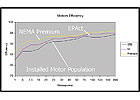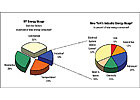
FIGURE 1. Life cycle cost of an industrial electric motor. (Figure courtesy of Baldor Electric Motors.)
Five health care institutions in New York are looking forward to healthy savings - approximately $320,000 - over the next decade, having completed an electric motor audit and subsequent upgrades. This article explains how smart motor management can generate a similarly sunny prognosis for other facilities in health care and beyond, and where to look for assistance.
Five health care institutions in New York State will save more than $320,000 in energy costs over 10 years by following the simple recommendations of an electric motor audit done at their facilities through New York State’s New York Energy $Martsm Program administered by the New York State Energy Research And Development Authority (NYSERDA). The motor audits were completed at Samaritan Medical Center in Watertown; Roscoe Community Nursing Home in Roscoe; Roswell Park Cancer Institute in Buffalo; The Samaritan Keep Home in Watertown; and Lewis County General Hospital in Lowville. The audits looked at the operating parameters of 235 motors at the five facilities and made specific recommendations on a motor-by-motor basis.
Why Motors?
Motors drive the industrial and commercial sectors, and therefore contribute significantly to their electric load. Unlike typical commercial facilities, hospitals, which operate 24/7/365, are regulated by strict levels of air circulation, air quality, and temperature stability resulting in longer operating hours for HVAC fans and pumps - essential equipment in maintaining the hospital’s environmental management.As a result, while management sees computers, lighting, and refrigerators every day, they are usually unaware of the contribution a myriad of hidden motors makes to their operating costs, or of how more efficient National Electrical Manufacturers Association (NEMA) Premium® class motors can immediately reduce their electric bill.
Motor purchasers have a choice between standard efficiency EPAct class motors, or NEMA Premium class motors, which are typically .4% to 3% more energy efficient. While this may seem small, consider the impact of a $20,000 annual reduction of a hospital’s electric bill that can result from the use of more efficient motors.

FIGURE 2. Comparison graph of U.S. motor efficiencies by hp. (Table courtesy of Emerson Motors.)
Historic Overview Of The U.S. Motor Population
Motors designed to be energy efficient were first introduced in the 1980s. However, the efficiencies of 1- to 200-hp motors were quite varied and often well below what current technology could economically permit. NEMA developed the NEMA MG 1 Table 12-10 that established a definition for energy-efficient motors. The Institute of Electronics and Electrical Engineers (IEEE) and Canadian Standards Association (CSA) developed standardized test procedures for energy efficiency (IEEE 112B or CSA 390) for 1- to 200-hp motors. With a definition of energy-efficient motors and standardized test procedure established, federally mandated efficiency standards were developed for 1-to 200-hp motors* and are included in the Energy Policy Act of 1992 (EPAct). The definitions in NEMA MG Table 12-10 are identical to the EPAct minimum standards (which became effective in 1997).The new standards effectively raised the overall efficiency of the U.S. motor population and presented the opportunity for the motor energy efficiency community to design a voluntary “premium efficiency” rating for EPAct-class motors that was above the EPAct efficiency levels.
In 1996, the Consortium for Energy Efficiency (CEE) in cooperation with the DOE, the American Council for an Energy-Efficient Economy (ACEEE), numerous electric utilities, motor manufacturers, and other stakeholders developed a standard for premium efficient motors. Utility incentive programs provided the opportunity to encourage commercial and industrial customers to go beyond the mandated EPAct efficient motor to a premium efficient motor at time of motor failure. In some cases, the energy savings potential is so high that replacing an existing, functional motor is financially justified.
In the 1990’s, the DOE embarked on a study to determine the energy usage profile of industrial motor systems in the United States. It was discovered that approximately 23% of all U.S. electricity is consumed by motor driven systems that use 1- to 200-hp general-purpose motors.
In 2001, CEE and NEMA harmonized their respective efficiency standards to create NEMA Premium, which is codified by NEMA in MG 1 Table 12-12. NEMA Premium defines 1 to 500 hp, 2-4-6 pole, low-voltage <600V and 250 to 500 hp medium voltage, whereas EPAct 1992 only defined standards for 1 to 200 hp, 2-4-6 pole, TEFC and ODP, NEMA A and B design. Today, utility prescriptive motor programs are designed around the efficiency delta between EPAct efficiency levels and the corresponding NEMA Premium efficiency levels.
Energy Usage Overview
Upwards of 85% of an industrial facility’s electric load is from motor systems and the DOE estimates that 23% of U.S. electricity is consumed by these systems alone. Further estimates project potential savings of 11% to 18% in this sector (62 to 104 billion kWh per year) from motor system optimization. Commercial office facilities typically see 20% to 25% of their electricity consumed by electric motors and health care facilities, such as hospitals, are often 25% to 40% because of their high, almost 24/7/365 use of motor driven HVAC and air circulation equipment.
FIGURE 3. Graphical representation of New York State energy use. (Figure courtesy of the DOE, Energy Information Administration, and National Association of Manufacturers.)
New York State Energy Usage
According to the 2004 Annual Survey of Manufacturers there are 433,868 industrial firms in New York State employing 7,416,680 people. The industrial sector accounts for 16% of New York State’s total energy consumption and is illustrated by Figure 3.Higher efficiency NEMA Premium class motors are typically more expensive than their lesser efficient counterparts. Facility managers and purchasing departments buy the lower first cost motors, unaware of the dramatic energy and cost savings possible.
In fact, the small incremental cost difference is typically overcome in as little as 18 to 24 months, with continued savings extending for the 15- to 20-yr life of such motors. NYSERDA offers customer incentives on qualifying NEMA Premium motors to help offset this first cost barrier.
For example, the program audited 93 motors at Roswell Park Cancer Institute in Buffalo and discovered that 38 of the motors met the financial requirements to be candidates for immediate replacement with a NEMA Premium motor. Additionally, 42 motors were candidates to be replaced with a NEMA Premium motor when they failed. If all the recommendations are followed, Roswell Park could save more than 3 million kWh or $256,620 over 10 years.
Program Results
The motor management phase of the program began in 2005, and the program has since completed 90 inventories of over 8,300 motors. The program has identified more than 7.7 million kWh and more than 1,070 kW in potential energy savings if all the candidate motors were replaced when suggested by the program’s analysis. Overall, 52% of the motors inventoried were candidates to be replaced at failure with a NEMA Premium motor and almost 12% of the motors inventoried were candidates to be replaced immediately with a NEMA Premium motor. Additionally, approximately 85% of the motors inventoried were not NEMA Premium motors.Ultimately, NYSERDA would like every enduser in New York to have a motor management plan in place. Whether they have a handful of motors or several thousand in operation, there should be a document that details what will happen when each motor fails. In some cases, because of its application, a motor must be repaired at failure. Motors that fit into that category should be identified and the repair process should be clearly known by all parties in advance of failure. The vendor selected to repair the motor should also be identified in advance and have a known reputation to follow the most advanced repair techniques available. Losing efficiency in a repair is unacceptable and can be costly over the life of the motor.
It is essential to understand that the purchase price of a motor represents just 2% to 5% of the cost of ownership of a motor. The balance of the cost is the energy to operate the motor. NYSERDA has program representatives that work with endusers and their vendors in the New York Energy $mart Program area, to help make the endusers’ facility as energy efficient as possible. Every energy dollar saved goes directly to the enduser’s bottom line, improving the company’s financial health.
To find out if your facility is eligible for an audit through the New York Energy $mart Program, or for more information, contact Ed Evans at 800-388-9294 or by e-mail ated@appliedproactive.com.
If you are located outside of New York, there may be resources for motor management activities in your area. Motor Decisions Matter (MDM) is a national campaign for raising awareness on motor management and providing support for companies interested in it. A consortium of motor manufacturers, motor service centers, trade associations, electric utilities, and government agencies, including NYSERDA, sponsors the MDM campaign.
The MDM website atwww.motorsmatter.orgcontains information, such as a summary of energy efficiency programs throughout the U.S. and Canada, and tools, such as the Motor Planning Kit and the 1·2·3 Approach to Motor Management, you can use to develop a motor management plan that meets your company’s needs. The information can also lead to partnerships with your local sales and service center, vendor, utility, or other energy-efficiency representatives who may offer added support. For more information, contactMDMinfo@cee1.org.ES
* EPAct 1992 specifically covers 1 to 200-hp, general purpose, NEMA A & B design, ODP and TEFC, medium voltage, 1,200-, 1,800-, and 3,600-rpm motors.




